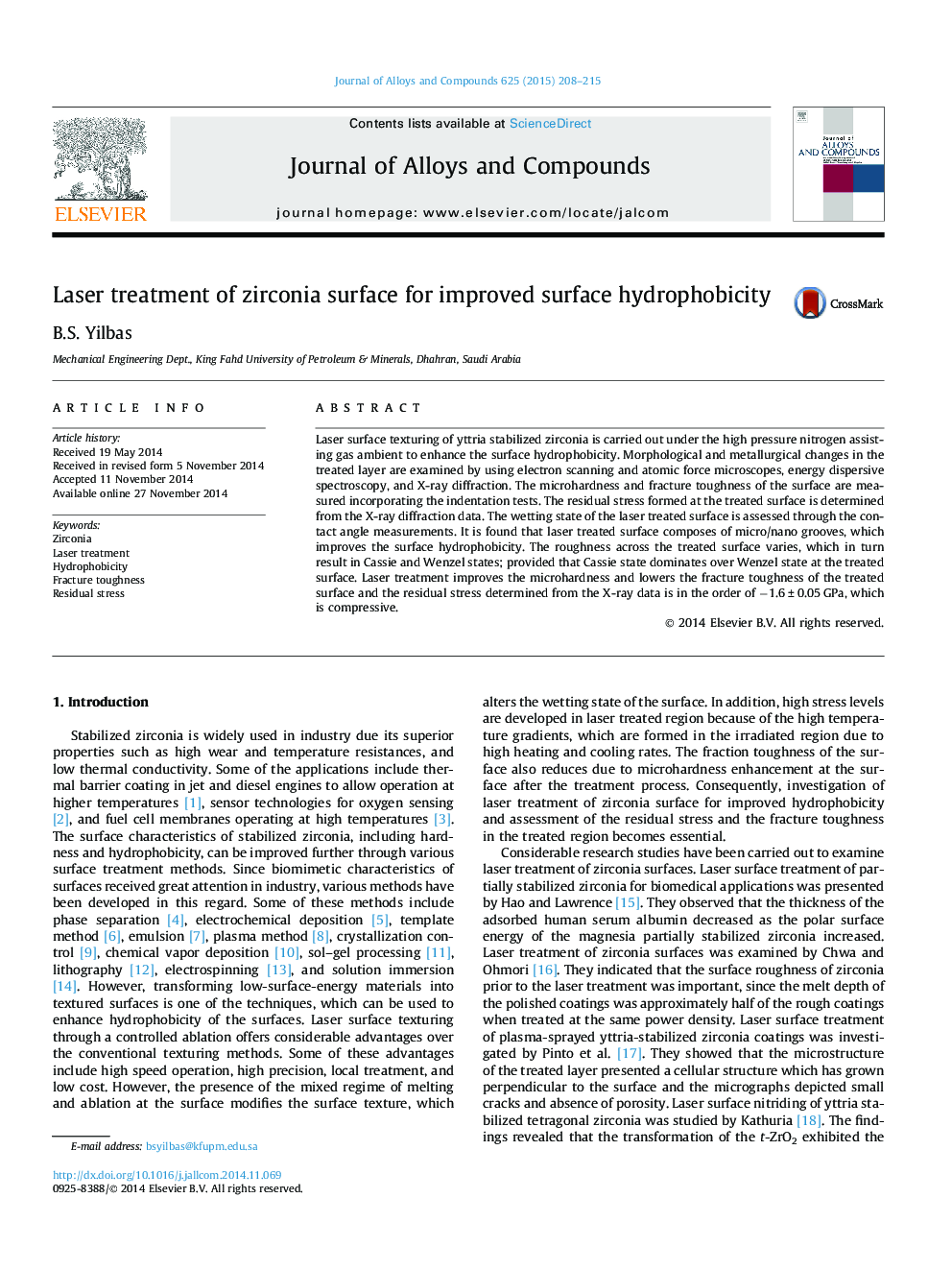| کد مقاله | کد نشریه | سال انتشار | مقاله انگلیسی | نسخه تمام متن |
|---|---|---|---|---|
| 1610088 | 1516268 | 2015 | 8 صفحه PDF | دانلود رایگان |
• Roughness is in order of 0.35 μm and it modifies wetting state of the surface.
• Cassie state dominates over Wenzel state at laser treated surface.
• Formation of ZrN modifies surface energy and contributes to surface hydrophobicity enhancement.
• Laser treatment increases microhardness and lowers fracture toughness of surface.
• Residual stress is in the order of −1.6 ± 0.05 GPa, which is compressive.
Laser surface texturing of yttria stabilized zirconia is carried out under the high pressure nitrogen assisting gas ambient to enhance the surface hydrophobicity. Morphological and metallurgical changes in the treated layer are examined by using electron scanning and atomic force microscopes, energy dispersive spectroscopy, and X-ray diffraction. The microhardness and fracture toughness of the surface are measured incorporating the indentation tests. The residual stress formed at the treated surface is determined from the X-ray diffraction data. The wetting state of the laser treated surface is assessed through the contact angle measurements. It is found that laser treated surface composes of micro/nano grooves, which improves the surface hydrophobicity. The roughness across the treated surface varies, which in turn result in Cassie and Wenzel states; provided that Cassie state dominates over Wenzel state at the treated surface. Laser treatment improves the microhardness and lowers the fracture toughness of the treated surface and the residual stress determined from the X-ray data is in the order of −1.6 ± 0.05 GPa, which is compressive.
Journal: Journal of Alloys and Compounds - Volume 625, 15 March 2015, Pages 208–215
